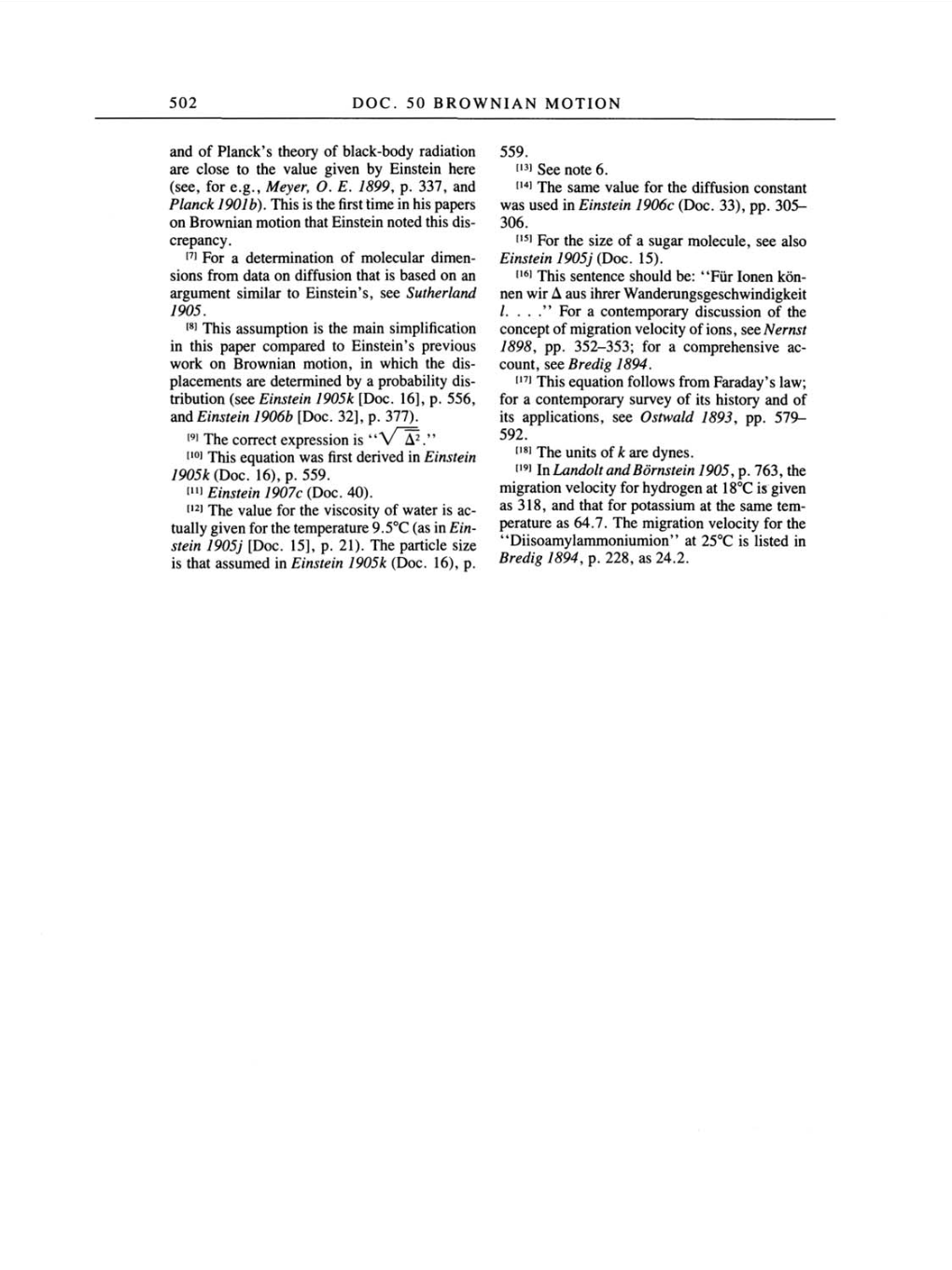502 DOC. 50 BROWNIAN MOTION
and
of Planck's
theory
of
black-body
radiation
are
close to the value
given by
Einstein here
(see,
for
e.g.,
Meyer,
O. E.
1899,
p.
337,
and
Planck
1901b).
This
is
the first time
in
his
papers
on
Brownian motion that Einstein noted this dis-
crepancy.
[7]
For
a
determination
of
molecular
dimen-
sions from data
on
diffusion that
is
based
on
an
argument
similar to Einstein's,
see
Sutherland
1905.
[8]
This
assumption
is
the main
simplification
in this
paper compared
to
Einstein's
previous
work
on
Brownian
motion,
in which the
dis-
placements
are
determined
by a probability
dis-
tribution
(see
Einstein
1905k
[Doc. 16], p. 556,
and Einstein 1906b
[Doc. 32], p. 377).
[9]
The
correct
expression
is
"VT2."
[10]
This
equation was
first derived
in
Einstein
1905k
(Doc. 16),
p.
559.
[11]
Einstein 1907c
(Doc. 40).
[12]
The value for the
viscosity
of
water is
ac-
tually given
for the
temperature
9.5°C
(as
in
Ein-
stein
1905j [Doc. 15], p. 21).
The
particle
size
is that assumed in Einstein 1905k
(Doc. 16),
p.
559.
[13]
See note
6.
[14]
The
same
value for the diffusion
constant
was
used in Einstein
1906c
(Doc. 33),
pp.
305-
306.
[15]
For the size
of
a sugar
molecule,
see
also
Einstein
1905j
(Doc. 15).
[16]
This sentence should be:
"Für
Ionen kön-
nen
wir
A
aus
ihrer
Wanderungsgeschwindigkeit
l...."
For
a contemporary
discussion
of
the
concept
of
migration velocity
of
ions,
see
Nernst
1898,
pp.
352-353; for
a comprehensive ac-
count,
see Bredig
1894.
[17]
This
equation
follows from
Faraday's law;
for
a contemporary survey
of
its
history
and
of
its
applications,
see
Ostwald
1893,
pp.
579-
592.
[18]
The units
of
k
are dynes.
[19]
In
Landolt and
Börnstein
1905,
p.
763,
the
migration velocity
for
hydrogen
at
18°C is
given
as
318,
and that for
potassium
at
the
same
tem-
perature as
64.7.
The
migration velocity
for
the
"Diisoamylammoniumion"
at 25°C is listed
in
Bredig 1894,
p.
228,
as
24.2.
